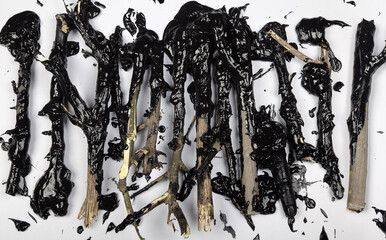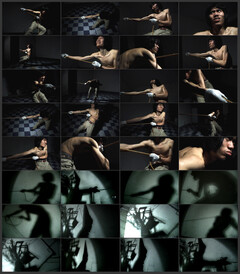Group Exhibition Times Museum, Guangzhou, (Main Exhibition Hall, 19Fl.)
Works by: Lucas Blalock, Elina Brotherus, Marcelo Cidade, Tacita Dean, Charles Gaines, Vidya Gastaldon, Paul Kos, Liang Shuo, Anthony McCall, Alicia McCarthy, Charlotte Moth, Simon Pyle, Hiraki Sawa, Maaike Schoorel, Lois Weinberger, Zhao Renhui, Zhou Tao, Toby Ziegler. New commissions by Chen Xiaoyun, Tsang Kin-Wah, and Zheng Guogu.
Co-curators: Betti-Sue Hertz, Yerba Buena Center for the Arts (San Francisco); Ruijun Shen, Guangdong Times Museum (Guangzhou); Xiaoyu Weng, Kadist Art Foundation (Paris / San Francisco).
Organized by:Guangdong Times Museum (Guangzhou), Kadist Art Foundation (Paris / San Francisco),Yerba Buena Center for the Arts (San Francisco)
Opening:17:00, May.27, 2014
Curators Conversation:14:30-16:30, May.27, 2014 ( 1F, Multifunction Hall)
Guided Tour:15:00-15:30 Every Sat. & Sun., June.7-July.24,2014.
The real voyage of discovery consists not in seeking new landscapes, but in having new eyes. —Marcel Proust
Making use of the natural scenery is the most vital part of garden design. . . . But the attraction of natural objects, both the form perceptible to the eye and the essence which touches the heart, must be fully imagined in your mind before you put pen to paper, and only then do you have a possibility of expressing it completely. —Ji Cheng
The exhibition Landscape: the virtual, the actual, the possible? considers visual, perceptual, and conceptual systems that have become increasingly unstable, both physically and metaphorically. Across various regions, situations, and contexts, artists are tracking our changing experience of nature as a space in image making, reproduction, and replication. This exhibition invites creative perspectives to connect two distinct geographic and cultural contexts, California in the United States and the Pearl River Delta region in China: from the cybernetic utopia and technology frontier to the world factory of electronic products; from the natural romanticism and ecology movements to massive urbanization and land struggles. The featured artworks touch upon subjects such as nature, landscape, the urban garden, virtual reality, digital technology systems, and their junctures.
The show’s title refers to Félix Guattari’s “four ontological functors”: the virtual, the actual, the real, and the possible. Through the lens of landscape, the exhibition poses the following questions: What is the mirror effect between landscape and technology, and how does each inform how we understand and experience ourselves and the other? How do different perspectives and approaches affect our mental images of landscapes? The voluntary organization of the landscape, the making of natural, intentional, and artificial gardens, and nature’s disruption of the urban built environment—all of these have found their way into our contemporary visual thinking.
The Anthropocene discourse and its extended cultural and social debates serve as the larger background. The Anthropocene thesis, first put forward by the Nobel Prize–winning atmospheric chemist Paul Crutzen, proposes that we are entering a new geological epoch. It claims that since the Industrial Revolution, human activities have altered the environment so extensively that a new form of nature has been created. Geologically, humankind’s self-created sediment layer has spread and encompassed the globe.
The Anthropocene thesis also recontextualizes and reframes traditional debates regarding the relationship among humankind, nature, and technology. Some visual elements and patterns have become too ambiguous to be recognized and interpreted based on one perceptual state, meaning that humans are no longer the foreground of existence. Instead, the distinctions between background and foreground, human and non-human, culture and nature, subject and object, the planet and history have become transferable, variable. This multi-stable relationship challenges the formerly stable and dualistic perspectives of modernity.
While the universalist dimension of the Anthropocene thesis addresses the largest possible frame (the entire world), it is also true that our individual realities are today increasingly fractured and multiplied by the frame of the computer and smartphone screen. What are the relationships between these micro-frames and the larger world? What lies outside of the frames? Whereas actual landscapes rely on perspectives, views, and vistas, the screen compresses and flattens space. According to Anne Friedberg in her 2006 book, The Virtual Window: From Alberti to Microsoft, the screen fosters “static, moving, multiply layered, obliquely angled, abstract, sequential, or multiple-frame images.” What integral qualities of the material world are preserved when it is translated into visual art, as artists track our experience of the stuff of nature?
The exhibition proposes possible links between this seemingly new, technologically mediated perspective versus ways of looking at the world that are rooted in traditional Chinese philosophy. In the latter, the works of humanity, far from imposing order on the landscape, seem designed expressly to conform to its natural contours. This corresponds with a cultural value system that views humanity and nature as sharing a common structure, their order and forms resonating and flowing in dynamic balance. The exhibition calls upon ideas of change, interconnectedness, and imagination inspired by Chinese traditional art and how they provide a vision, experience, and memory of landscape. Visitors will see how the egalitarian principles and natural romanticism of the 1960s and 1970s found inspiration in traditional Asian concepts of the relations between humans and nature.
Exhibition Schedule:
Guangdong Times Museum (May 27 – July 27, 2014)
San Francisco Yerba Buena Center for the Arts (Oct. 24, 2014 – Jan. 25, 2015)






